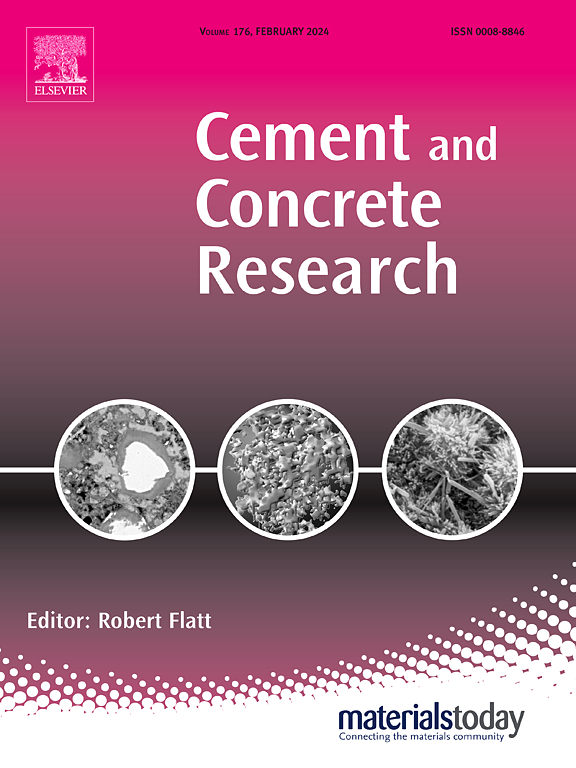挤压型3D打印混凝土各向异性的成因:细丝表皮和结块的作用
IF 10.9
1区 工程技术
Q1 CONSTRUCTION & BUILDING TECHNOLOGY
引用次数: 0
摘要
基于挤压的3D混凝土打印(3DCP)面临的最大挑战之一是打印材料的各向异性:在载荷下,观察到的性能通常低于等效的铸造材料,并且在某些方向上明显如此。此外,性能也比铸造材料更加多变。这些观测结果部分是由于地表水分蒸发和空气夹持。在这里,我们研究了这样的假设,即印刷混凝土由凝聚的丝芯和具有不同特性的表皮组成,这是印刷过程的必然结果。通过新颖的x射线计算机断层扫描测量,我们发现打印混凝土由核心和细丝界面区网络(FIZN)组成,与核心相反,除了在存在不完全结合的边界处,发现FIZN没有孔隙。通过形态、化学和力学分析,还发现FIZ材料比长丝芯少含20%的沙子和60%的无水水泥,而FIZ材料的抗压强度比芯高11%,抗折强度低28%,弹性模量低22%。这项工作的发现表明,各向异性将永远存在,为了产生一致和可预测的硬化材料性能,应注意材料流变学、印刷系统和细丝排列。本文章由计算机程序翻译,如有差异,请以英文原文为准。
On the origins of anisotropy of extrusion-based 3D printed concrete: The roles of filament skin and agglomeration
One of the most significant challenges facing extrusion-based 3D concrete printing (3DCP) is the anisotropy present in the printed material: under load, the observed performance is typically lower than a cast equivalent and significantly so in certain directions. In addition, the performance is also more variable than cast material. These observations are, in part, due to surface moisture evaporation and air entrapment. Here, we investigate the hypothesis that the printed concrete comprises of agglomerated filament core and skin having distinct properties as a necessary consequence of the printing process. Through novel X-ray computed tomography measurements, we show that printed concrete comprises the core and Filament Interfacial Zone Network (FIZN) and that, in contrast to the cores, the FIZN is found to be free from pores except at boundaries where there is incomplete bonding. Through morphological, chemical and mechanical analysis, the FIZN is also found to contain 20% less sand and 60% more anhydrous cement than the filament cores, while the FIZ material was inferred to have 11% higher compressive strength, 28% lower flexural strength and 22% lower elastic modulus than the core. The findings from this work suggest that anisotropy will always exist and that care should be devoted to the material rheology, printing system and the filaments arrangement in order to produce consistent and predictable hardened material properties.
求助全文
通过发布文献求助,成功后即可免费获取论文全文。
去求助
来源期刊

Cement and Concrete Research
工程技术-材料科学:综合
CiteScore
20.90
自引率
12.30%
发文量
318
审稿时长
53 days
期刊介绍:
Cement and Concrete Research is dedicated to publishing top-notch research on the materials science and engineering of cement, cement composites, mortars, concrete, and related materials incorporating cement or other mineral binders. The journal prioritizes reporting significant findings in research on the properties and performance of cementitious materials. It also covers novel experimental techniques, the latest analytical and modeling methods, examination and diagnosis of actual cement and concrete structures, and the exploration of potential improvements in materials.
 求助内容:
求助内容: 应助结果提醒方式:
应助结果提醒方式:


